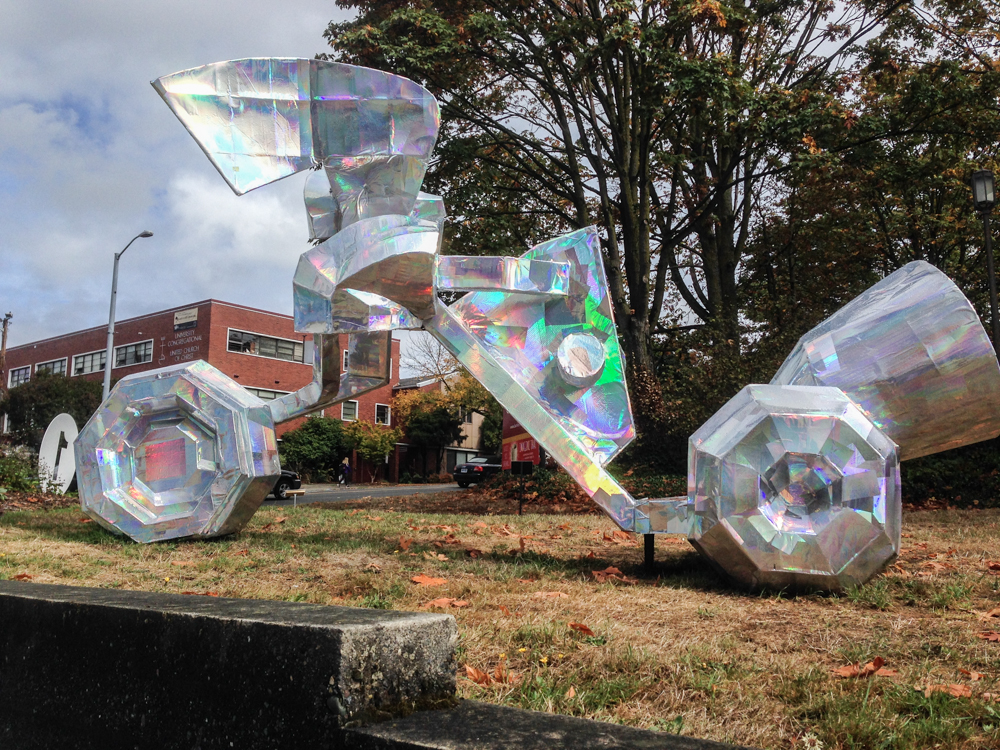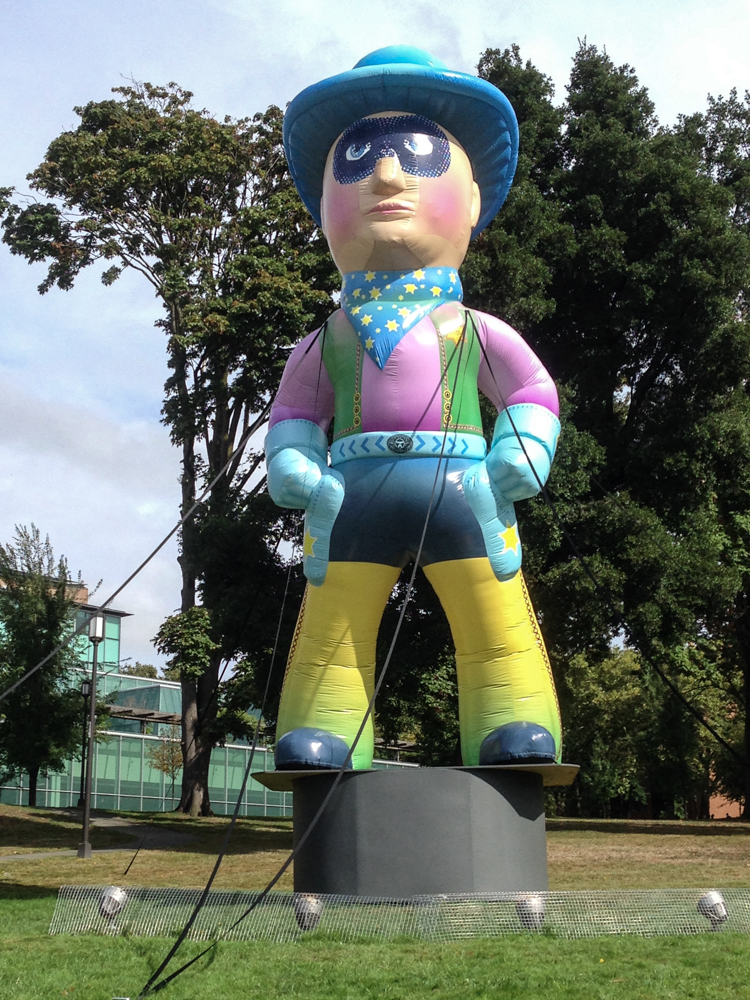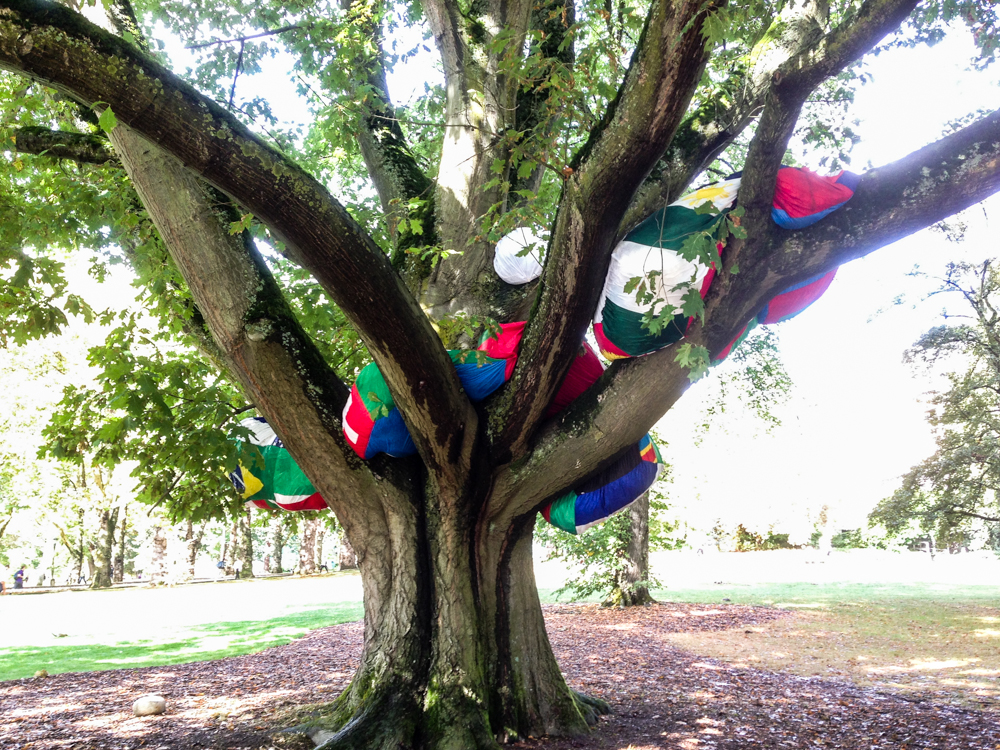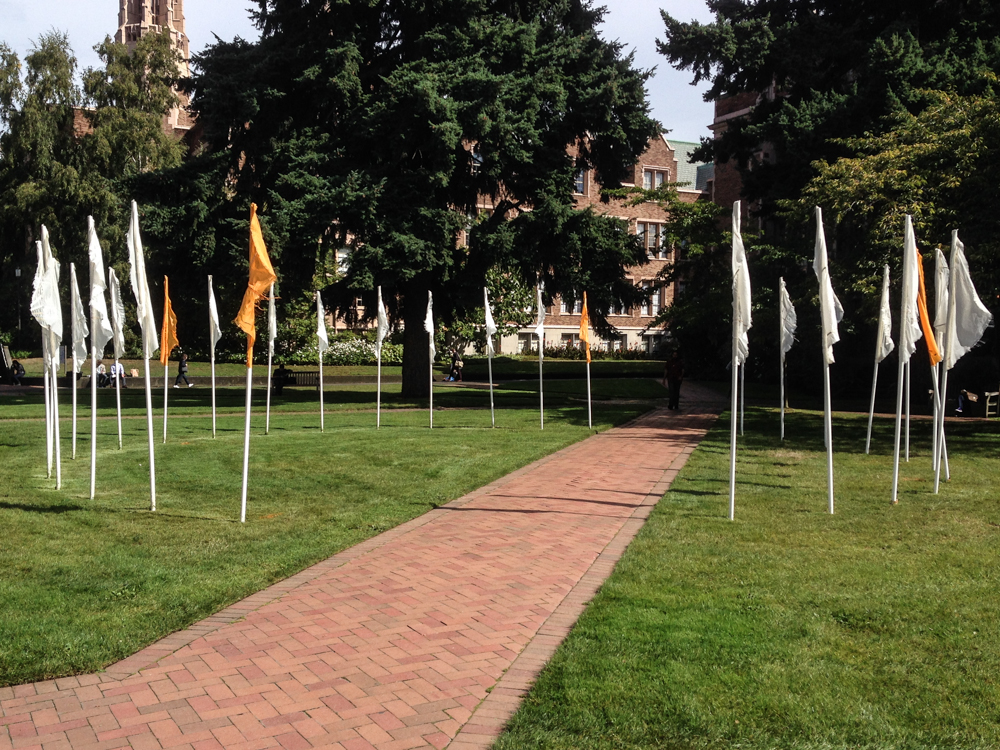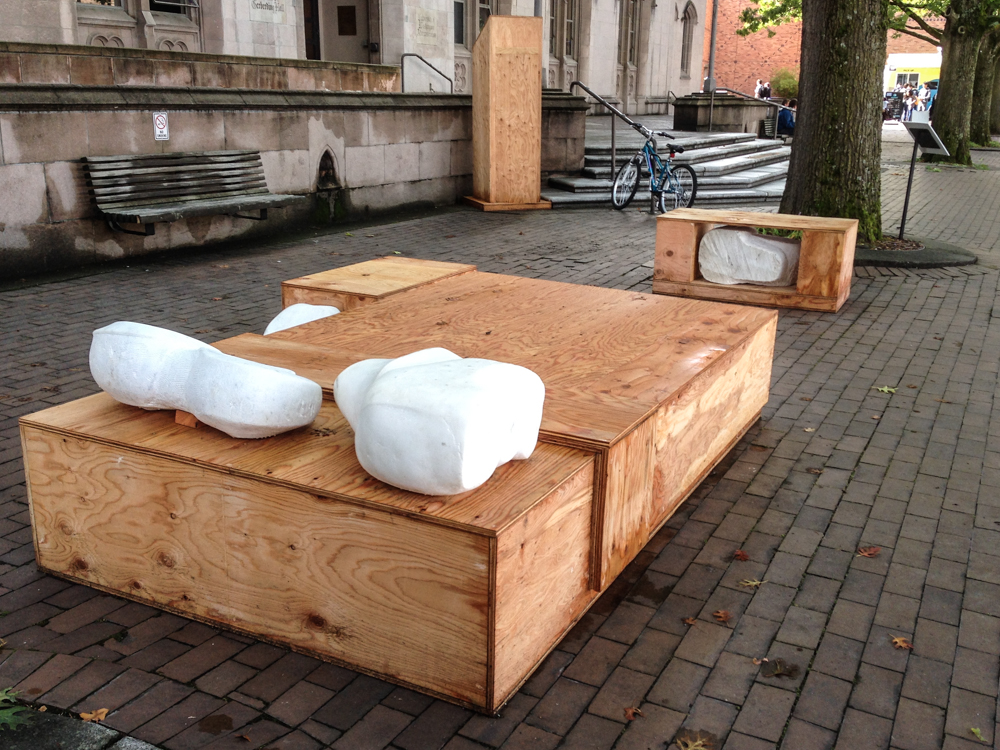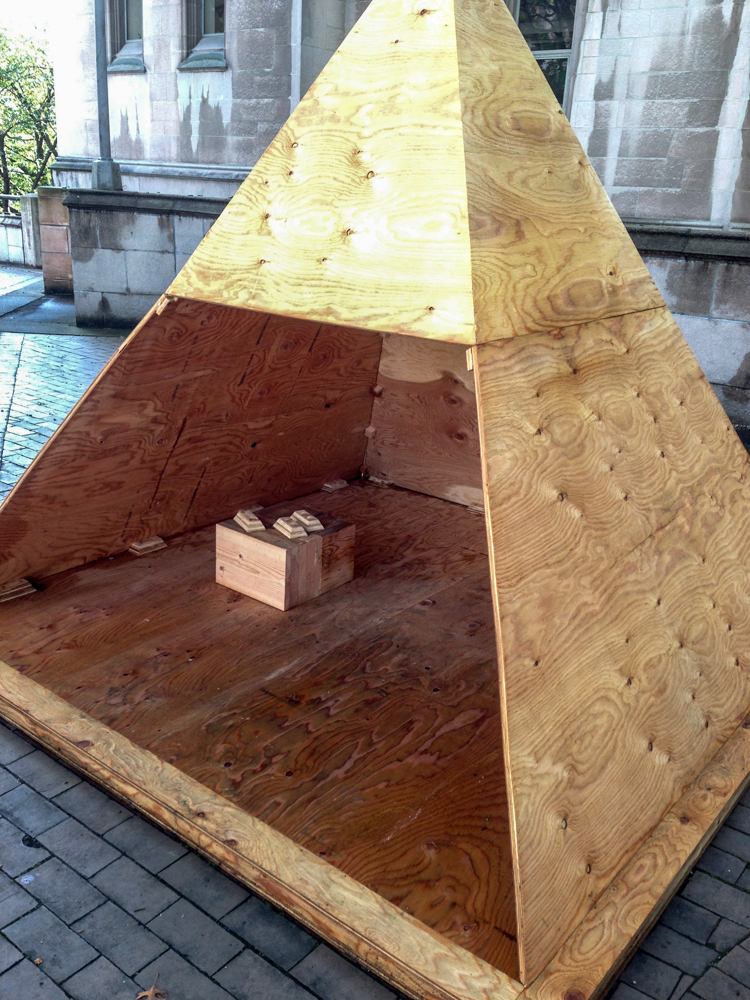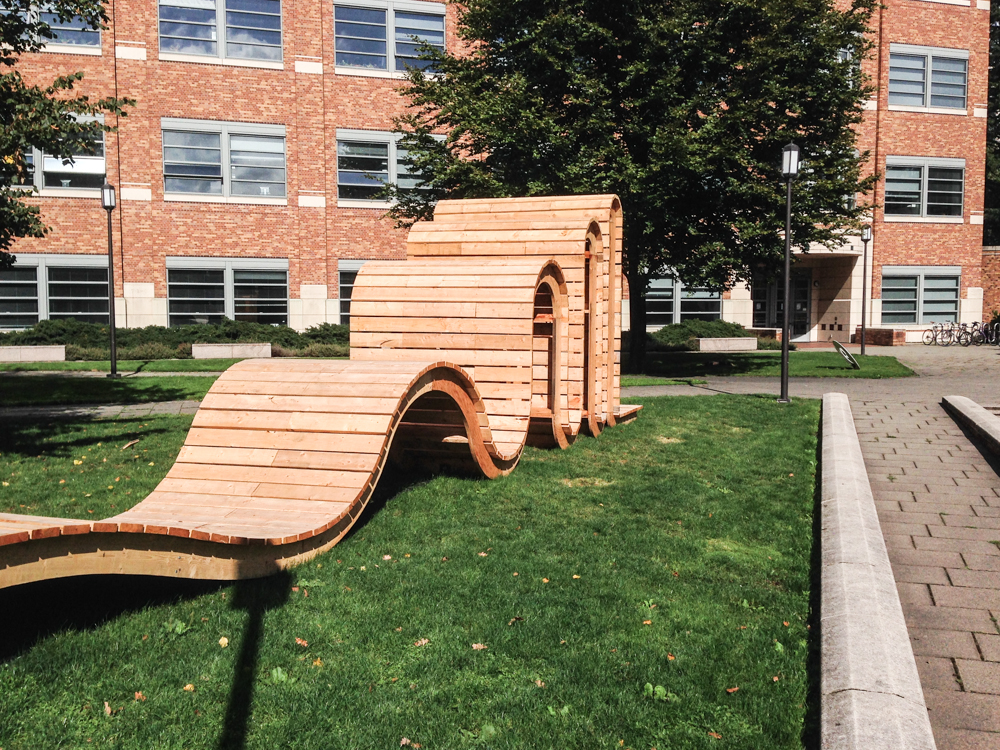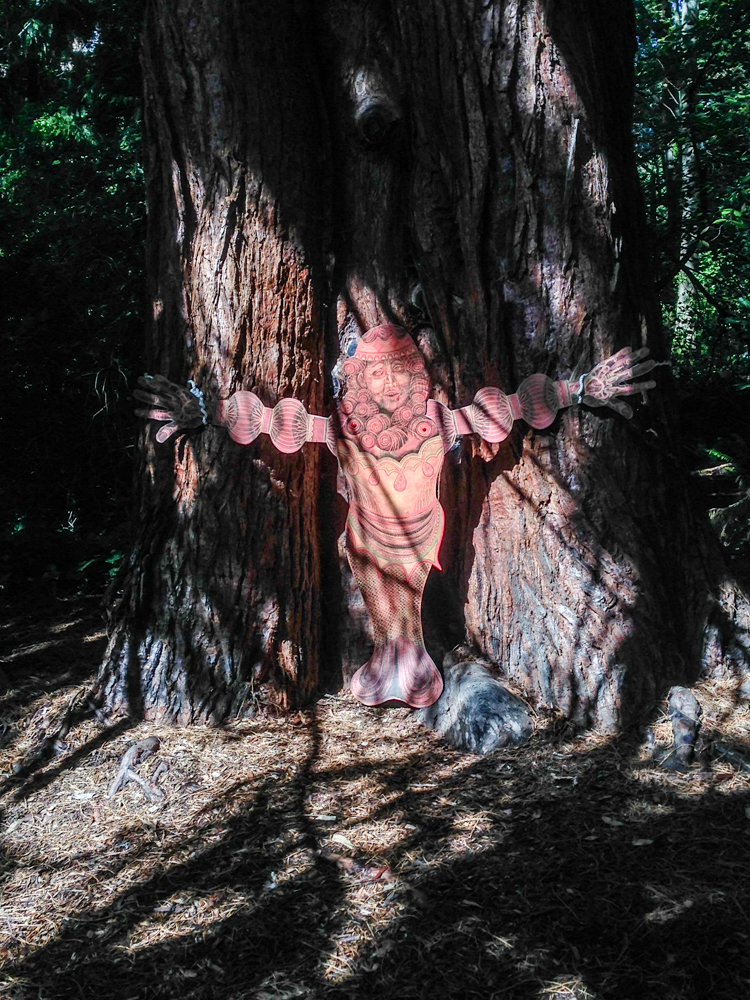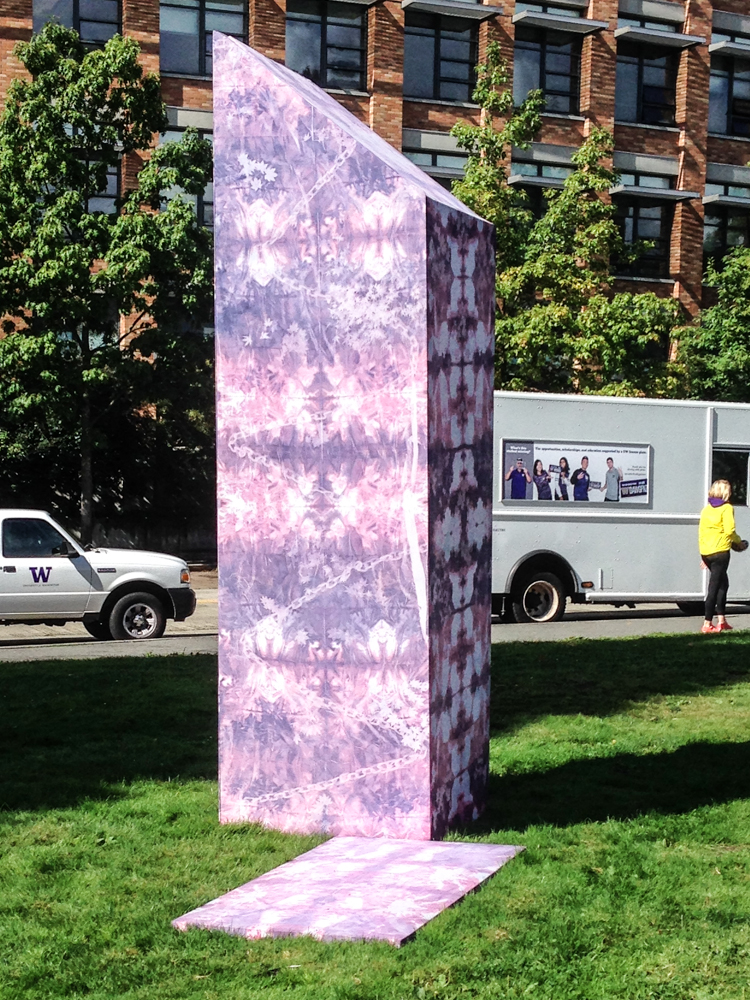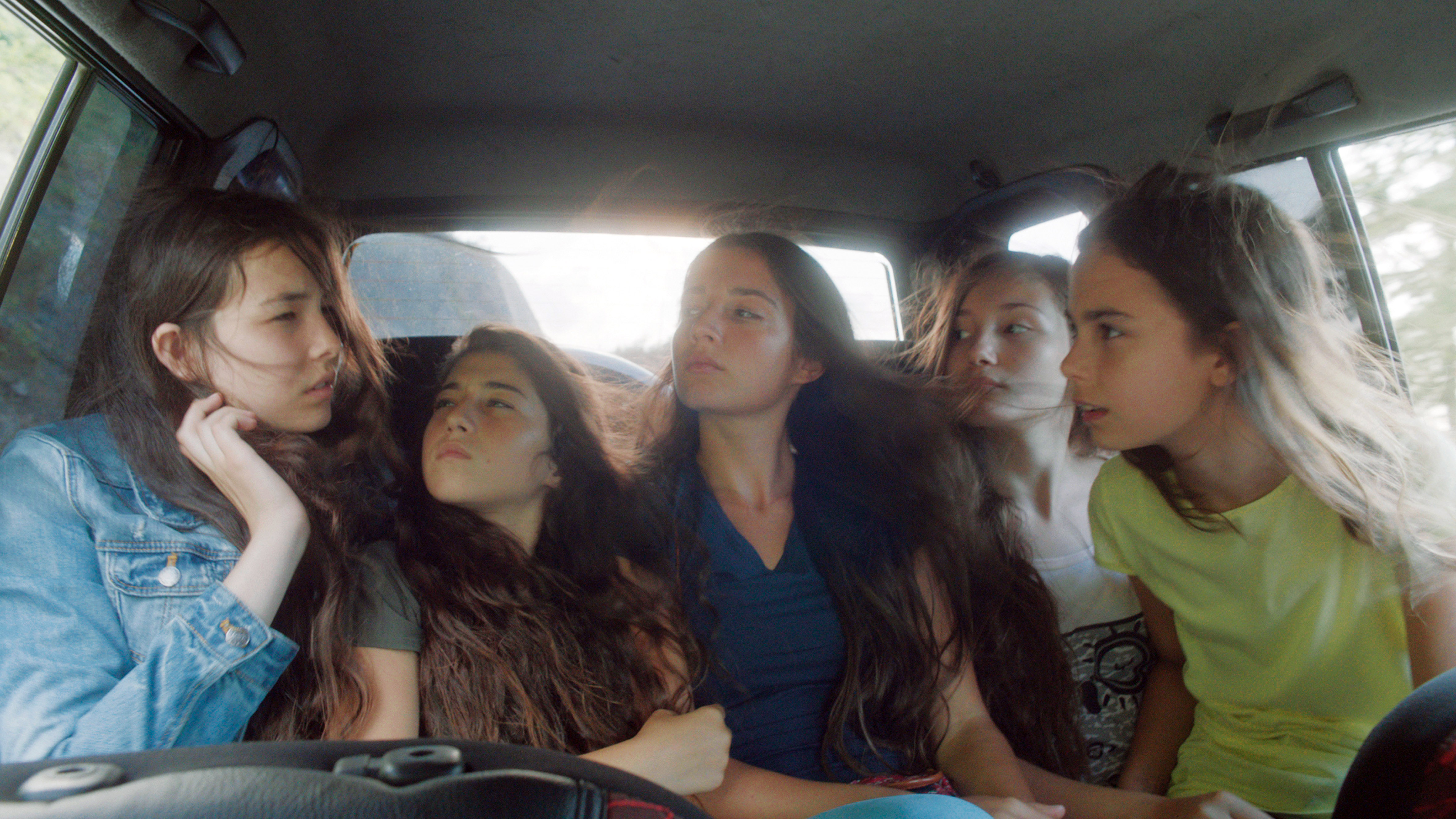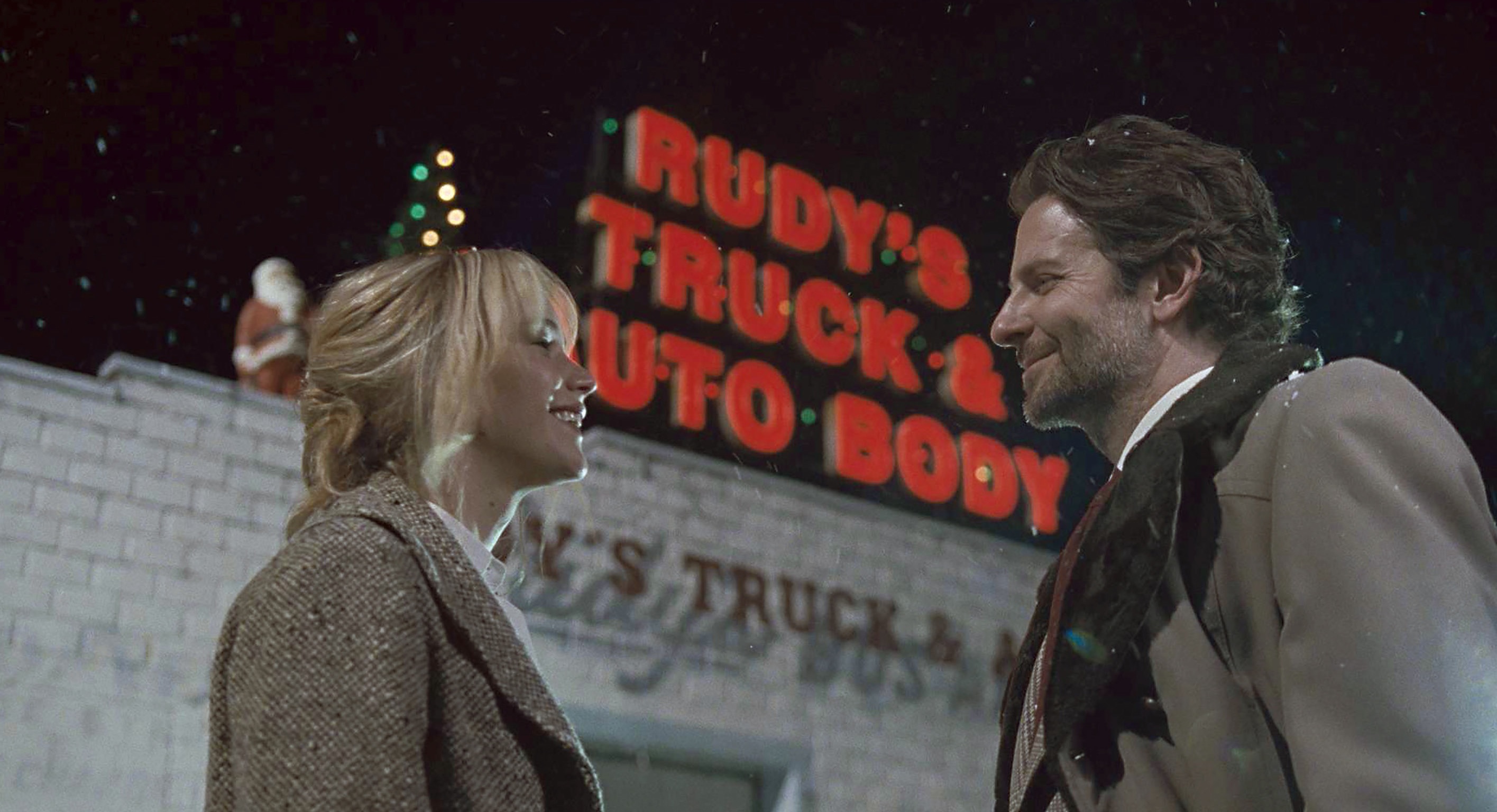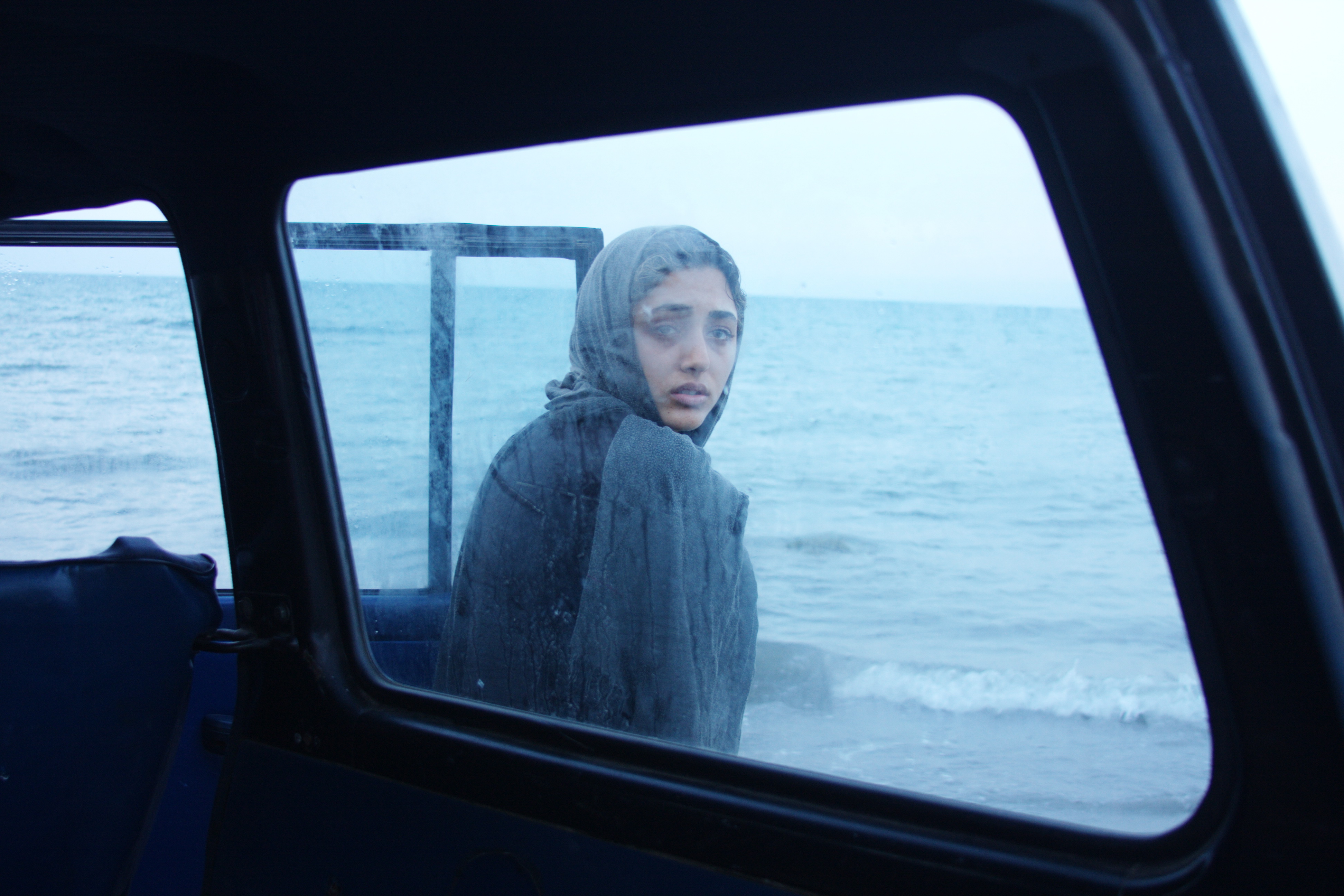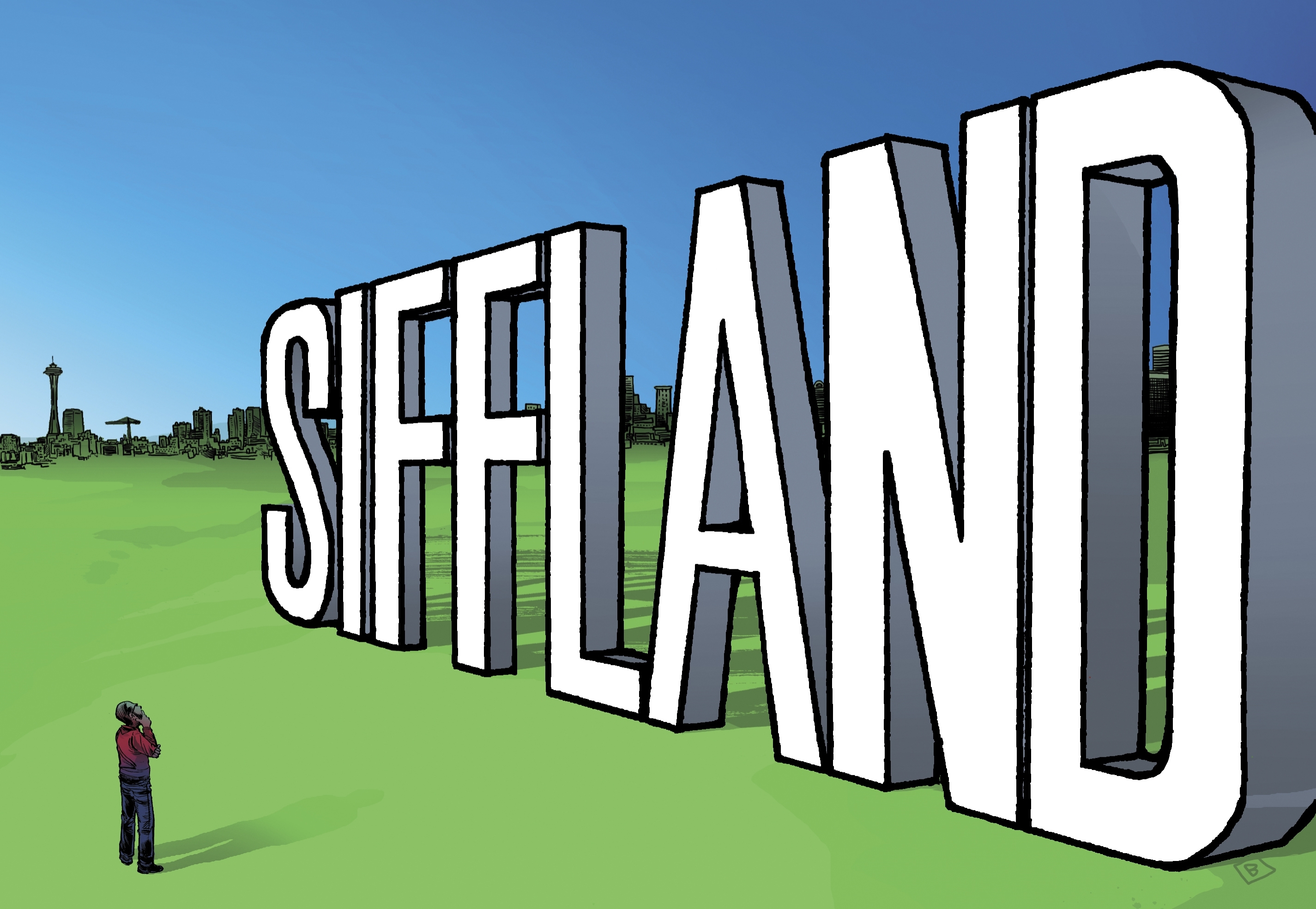Public art generally falls into two categories: 1) massive and durable enough to withstand the elements (and vandals and graffiti and pigeons and popular indifference…); or 2) temporary and cheap enough that no one minds if it’s stolen or defaced or (again) greeted with popular indifference. Do you detect a theme here? There’s nothing particularly good or bad about the 12 art stations of Mad Campus, located along a 2.5-mile walking loop on the UW campus. The art, as with any group show, achieves a kind of mean average: some pieces make you stop and linger, wanting to learn more about the individual artist; others you quickly digest and pass by; and six weeks (the duration of the show) feels about right.
The virtue of short-run outdoor exhibitions of this nature—like CoCA’s Heaven & Earth VI in Carkeek Park, ending Oct. 20—is their evanescence. Because they’re not permanent, we don’t really have to form a lasting judgment. These pieces aren’t bound for indoor collections; most, in fact, are bound for the scrap heap after their deployment. There’s no need or duty to form a long-lasting attachment (or dislike), as there is to whatever’s hanging over your couch. In a gallery or museum, you often feel peer pressure to linger and stare even when you’re bored. One doesn’t want to be a dilettante or philistine—at least not when people are watching.
Down at the Olympic Sculpture Park, for instance, the big new white Jaume Plensa head, Echo, demands your fealty and appreciation, like some kind of Easter Island totem. It’s roped off. There are security guards. It’s illuminated at night. And, most fundamental, it’s expensive. Tourists and other visitors feel obligated to stop and photograph it with their iPhones because it’s been officially designated as capital-A art, placed in a permanent, official cloister of similarly august objects. We will be forced to live with it, kowtow to it, even if we don’t like it.
By comparison, the exhibits in Mad Campus, organized by MadArt curators Alison Milliman and Tim Detweiler, are more disposable—and I don’t mean that as disparagement. The most prominent piece, at Northeast 45th Street and 15th Avenue Northeast (by the Burke), is Kevin McCarthy’s Sentinel, a kind of tricycle-looking wooden assemblage covered in reflective foil. It relates to the busy intersection by suggesting mobility (those wheels), yet also resembles a bizarre, futuristic visitor—like one of those Mars rovers, only sent here by distant scientists outside our galaxy. It helps that the thing is 10 feet high (motorists can’t ignore it) and that it reflects the damp autumn light. With the sun at the right angle, it dazzles, and refracted raindrops can give it a kind of halo. (If Jeff Koons were its creator, it’d be covered in polished silver or gold and sell for millions at Art Basel.)
Loop inside the campus, proceeding by foot, and Evan Blackwell’s Relics of Experience presents a panoply of fossils in little cubbyholes. There’s a natural kinship to the Burke nearby, and an affinity to Joseph Cornell’s boxes. On a quiet walkway, it invites close-up examination; it’s not art made for passing motorists. Deeper into the arcadian grounds are installations in trees, on lawns, in Red Square, and in some academic courtyards. Some you have to hunt out in little glades and are easily missed.
The greater problem during my visit last week was that no one—and I mean no one—was looking at the art but me. The UW had just begun its fall quarter, and the campus was teeming with bright, enthusiastic young people rushing between new classes. The walkways were full, and all the students were staring intently at their smartphones.
The issue here isn’t that young people don’t care for art; rather, in such a busy setting, they don’t expect to be encountering it. Never mind the large white signs—this isn’t the Sculpture Park, or SAM, or even Burning Man. You could call it the apathy of the unticketed: When there’s a price tag involved, people pay attention. Free art is more easily dismissed.
CoCA’s shows-in-the-park have drawn a more motivated kind of visitor, those who expect to examine art in the serenity of nature. There’s a treasure-trail effect with a map (and those pesky QR codes). Touring these al fresco exhibits, I’m sometimes reminded of those geocaching enthusiasts in bright-colored team T-shirts who race about the city, smartphones in hand, using the GPS function to discover this mystery or that.
Certainly Mad Campus ought to be engaging a similar demo of tech-savvy visitors. But I think part of the problem here is that (involuntary) student-age artgoers aren’t accustomed to looking for conventional markers, mileposts, signs, or galley wall cards. They want the information broadcast to them via WiFi or social media. There needs to be more of a push model of engagement here; the art needs to call out to you, as does the more successful Sanctum at the Henry. That ongoing installation by the UW’s James Coupe and Juan Pampin entices busy students with audio and video, filming and rewarding the curious passersby to create a “Look, there I am!” effect. I suppose that’s narcissism, in which every spectator becomes a star, but it’s also interactive, which I think Xbox babies demand.
To succeed in this environment, art needs to be more of a game. It needs to show up—initially, at least—on your phone. And that, of course, is what proximity-related apps like Grindr and Tinder are doing: signaling to you the presence of something (well, someone) you might like.
Most of the creations in Mad Campus are comparatively reticent and retiring. I like the shaded-grove installation Hortus Curiosus by Saya Moriyasu and Maki Tamura, but it’s so shy and hidden—a little arboreal tea party, known only to initiates. (That too is the problem with most gallery art: insularity.)
Given the competing demands on students’ attention, subtlety is never going to work here. And if you can’t have technological sophistiction (which would require an expensive team of coders), scale is your next best friend. Piper O’Neill simply bought and installed a 28-foot-tall inflatable cowboy, like something you’d see at a car wash or a tourist trap. Is it art? I don’t care. If it makes students stop and ponder, that’s enough. UW Campus Walking map & info: madartseattle.com. Ends Oct. 25.
